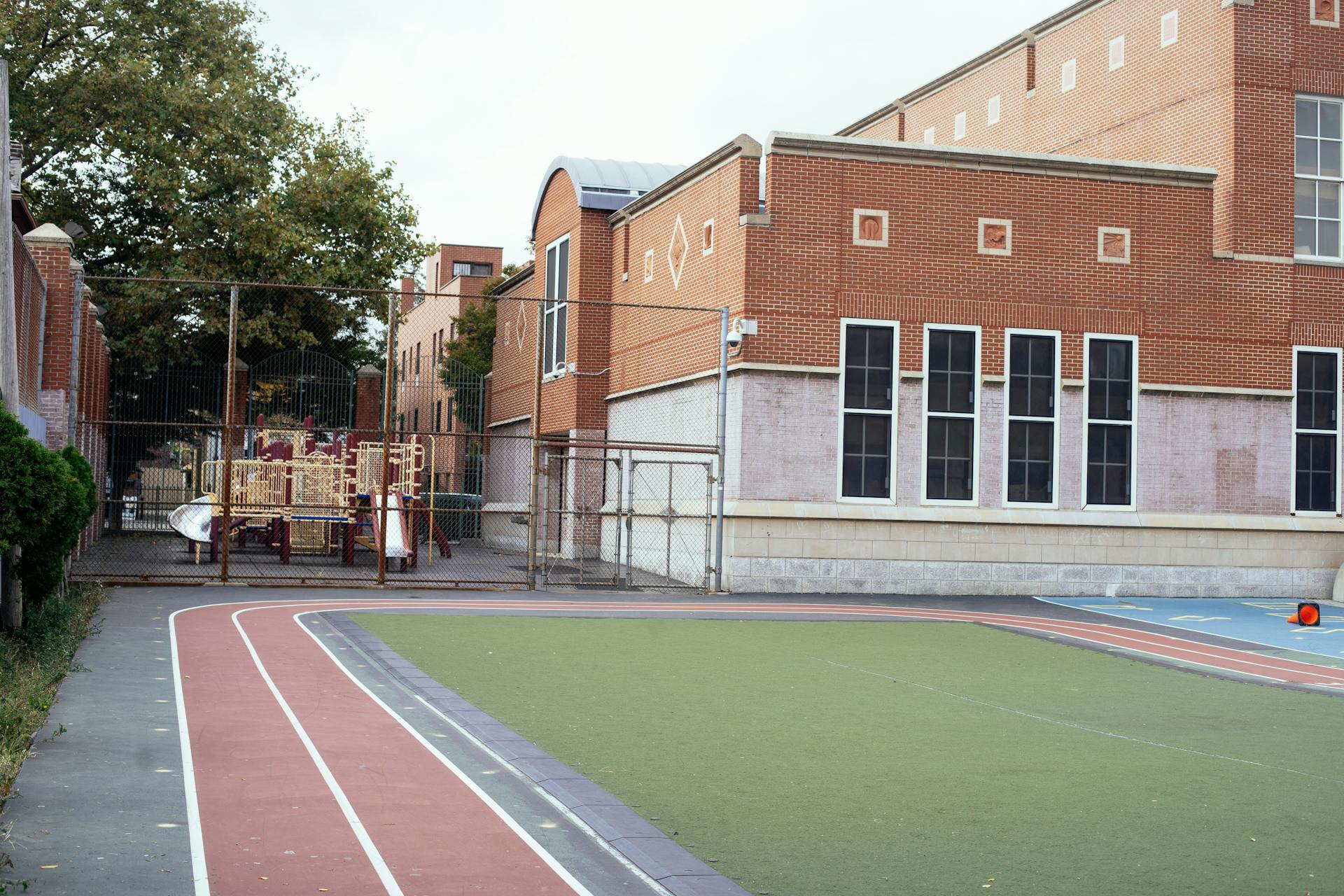The average age of a main instructional school building in the United States is 49 years, according to a survey by the National Center for Education Statistics (NCES).
About 38% of schools were built before 1970. Roughly half of the schools surveyed have undergone a major building renovation or addition. Of those that have been renovated, the average age of the renovation was 14 years.
Major repair, renovation, or modernization work was being performed in 21% of all public schools surveyed as of December 2023. Indoor air quality is a major focus for many schools, with 39% having an indoor air quality coordinator on campus. This position is responsible for monitoring air quality conditions at the school and reporting air quality issues and complaints.
Some 60% of schools have designated vehicle loading and unloading areas at least 25 feet from all building air intakes, including doors and windows. Eighteen % of schools have an anti-idling program that includes signage and active monitoring during pick-up and drop-off times.
Some 31% of public schools have one or more non-permanent (portable) buildings in use.
Here are other findings from the NCES public school building survey:
The average age of the main instructional building is 49 years old. The following %ages of reporting public schools’ main instructional buildings were built during the following time periods:
- Pre-1970: 38%
- 1970 – 1999: 21%
- 2000 – present: 20%
Nearly all public schools (93%) reported having some kind of athletic amenities on-site. The most commonly reported types of facilities were:
- A gymnasium (69%)
- All-purpose grass field (68%)
- Outdoor basketball court (56%)
- Baseball/softball field (38%)
- Weight room (29%)
- Outdoor track (28%)
Most public schools have dedicated library space available (89%).
Compared to the national estimate (89%), higher percentages of public schools with the following characteristics reported having dedicated library space available:
- With 500-999 students (96%)
- With a student body made up of 0-25% students of color (96%)
- In rural areas (94%)
- With 300-499 students (93%)
- Elementary schools (93%)
- In low-poverty neighborhoods (92%)
Compared to the national estimate (89%), lower percentages of public schools with the following characteristics reported having dedicated library space available:
- In cities (84%)
- In high-poverty neighborhoods (81%)
- With a student body made up of 76% or more students of color (80%)
- High/secondary schools (80%)
- With 0-299 students (77%)
Related Stories
| Oct 9, 2014
Regulations, demand will accelerate revenue from zero energy buildings, according to study
A new study by Navigant Research projects that public- and private-sector efforts to lower the carbon footprint of new and renovated commercial and residential structures will boost the annual revenue generated by commercial and residential zero energy buildings over the next 20 years by 122.5%, to $1.4 trillion.
| Sep 29, 2014
Living Building vs. LEED Platinum: Comparing the first costs and savings
Skanska USA's Steve Clem breaks down the costs and benefits of various ultra-green building standards and practices.
| Sep 24, 2014
Architecture billings see continued strength, led by institutional sector
On the heels of recording its strongest pace of growth since 2007, there continues to be an increasing level of demand for design services signaled in the latest Architecture Billings Index.
| Sep 22, 2014
4 keys to effective post-occupancy evaluations
Perkins+Will's Janice Barnes covers the four steps that designers should take to create POEs that provide design direction and measure design effectiveness.
| Sep 22, 2014
Sound selections: 12 great choices for ceilings and acoustical walls
From metal mesh panels to concealed-suspension ceilings, here's our roundup of the latest acoustical ceiling and wall products.
| Sep 9, 2014
Using Facebook to transform workplace design
As part of our ongoing studies of how building design influences human behavior in today’s social media-driven world, HOK’s workplace strategists had an idea: Leverage the power of social media to collect data about how people feel about their workplaces and the type of spaces they need to succeed.
| Sep 7, 2014
Behind the scenes of integrated project delivery — successful tools and applications
The underlying variables and tools used to manage collaboration between teams is ultimately the driving for success with IPD, writes CBRE Healthcare's Megan Donham.
| Sep 4, 2014
Best of education design: 11 projects win AIA CAE architecture awards [slideshow]
The CAE Design Excellence Award honors educational facilities that the jury believes should serve as an example of a superb place in which to learn. Projects range from a design school in Maryland to an elementary school in Washington.
Sponsored | | Sep 4, 2014
Learning by design: Steel curtain wall system blends two school campuses
In this the new facility, middle school and high school classroom wings flank either side of the auditorium and media center. A sleek, glass-and-steel curtain wall joins them together, creating an efficient, shared space. SPONSORED CONTENT
| Sep 3, 2014
New designation launched to streamline LEED review process
The LEED Proven Provider designation is designed to minimize the need for additional work during the project review process.
















